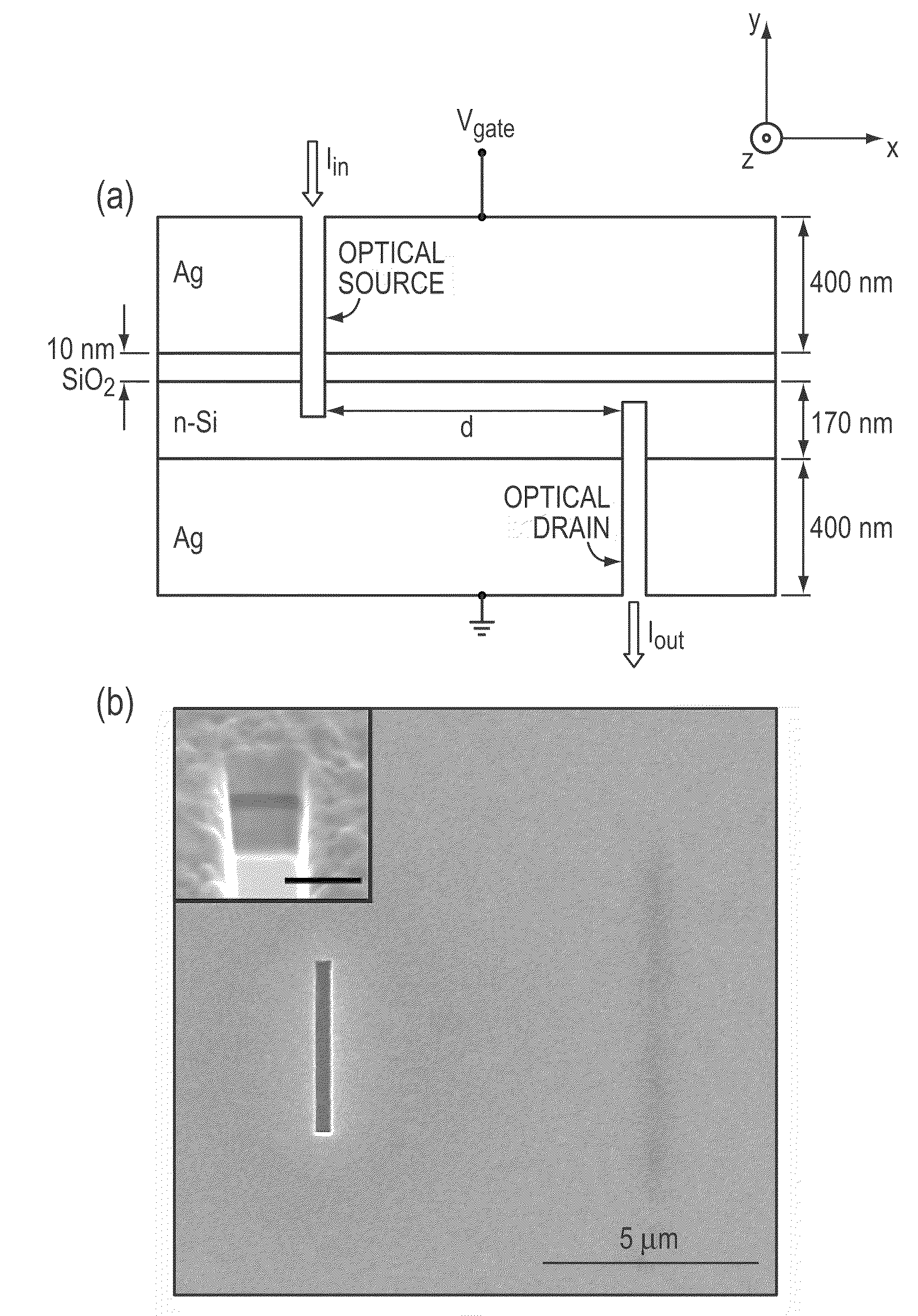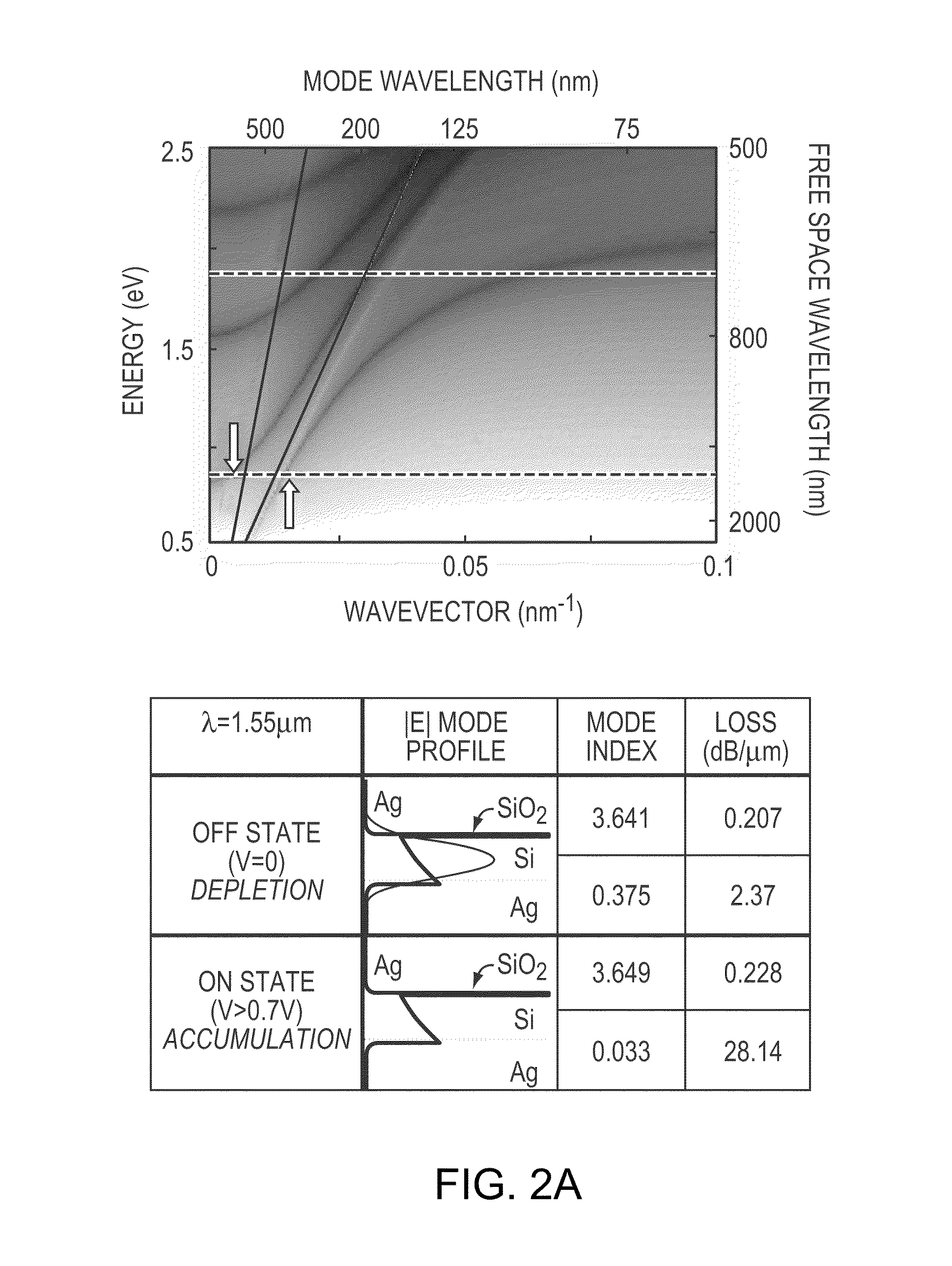Plasmostor: a-metal-oxide-si field effect plasmonic modulator
a plasmonic modulator and metal oxide technology, applied in the field of optical modulators, can solve the problems of accompanied mos scaling, increased circuit delay, and higher electronic power dissipation
- Summary
- Abstract
- Description
- Claims
- Application Information
AI Technical Summary
Problems solved by technology
Method used
Image
Examples
Embodiment Construction
[0035]Ultracompact silicon-compatible modulators, ideally comprising dimensions, materials, and functionality similar to electronic complementary metal-oxide-semiconductor (CMOS) components are expected to be useful to provide chip-based all-optical and optoelectronic computational networks. We have demonstrated such a modulator, based on field-effect modulation of plasmon waveguide modes in a MOS geometry. Near-infrared transmission between an optical source and drain is controlled by a gate voltage that drives the MOS into accumulation. Using the gate oxide as an optical channel, electro-optic modulation is achieved in device volumes of half of a cubic wavelength with femtoJoule switching energies and the potential for GHz modulation frequencies. Modulation has been observed in devices with channel areas (length×thickness) as small as 0.01λ2, with sub-nanosecond switching speeds.
[0036]We present a demonstration of a field effect Si modulator based on multimode interferometry in a ...
PUM
| Property | Measurement | Unit |
|---|---|---|
| wavelength | aaaaa | aaaaa |
| wavelength | aaaaa | aaaaa |
| wavelength | aaaaa | aaaaa |
Abstract
Description
Claims
Application Information
 Login to View More
Login to View More - R&D
- Intellectual Property
- Life Sciences
- Materials
- Tech Scout
- Unparalleled Data Quality
- Higher Quality Content
- 60% Fewer Hallucinations
Browse by: Latest US Patents, China's latest patents, Technical Efficacy Thesaurus, Application Domain, Technology Topic, Popular Technical Reports.
© 2025 PatSnap. All rights reserved.Legal|Privacy policy|Modern Slavery Act Transparency Statement|Sitemap|About US| Contact US: help@patsnap.com



